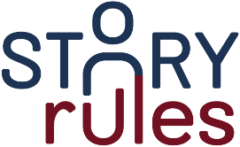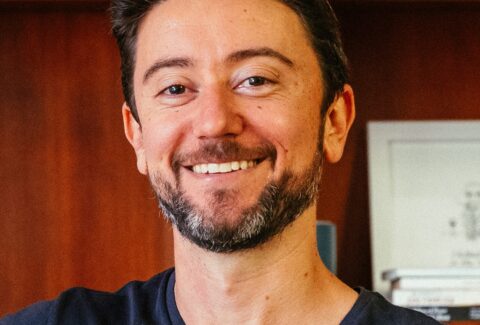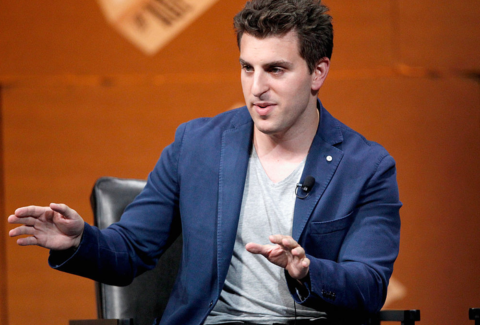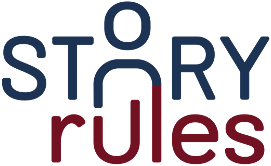The art of ‘slow productivity’ by Cal Newport
Welcome to the fifty-fourth edition of ‘3-2-1 by Story Rules‘.
A newsletter recommending good examples of storytelling across:
- 3 tweets
- 2 articles, and
- 1 long-form content piece
Let’s dive in.
𝕏 3 Tweets of the week
Fun fact: Till about my late twenties, I would never brush my teeth before sleeping at night (I know, my teeth are terrible). Then something happened (I think I read ‘The Power of Habit‘) and I started doing it consciously. Slowly it became a habit. Eventually, I could not go to sleep without brushing. And yes, like the tweet says, I once bought a toothbrush when I’d forgotten it.
This also works for reading for me. Even if there is no internet, and I’m not carrying my Kindle, I have books loaded on my phone to read. (I know, I know, I should use the free time to reflect).
Fascinating. I would have thought empathy was more important. I guess humour + wise empathy is a powerful combination.
I didn’t get it at first – it seems like two separate pics. And then it bites you!
📄 2 Articles of the week
a. 6½ Ways to Write Faster by Ann Handley
Ann Handley is a renowned marketing communications expert (check out her fortnightly newsletter, ‘Total Annarchy‘).
Starting with pen and paper is great advice. It’s worked for me too, for several years. I loved Ann’s evocative train analogy!
Start with Pen + Paper
Write a list of your key points on paper with a pen. Flesh out those key points with a few bullet points. Don’t worry about “writing.” You’re welding the scaffolding for ideas that will become writing.Why this works:
You write slower than you type. Working with analog tools slows you down. Your high-speed locomotive brain isn’t screaming ahead to get to Next Sentence Depot. It has to wait patiently for your hands to catch up, like a car driver at a railroad crossing waiting for the train’s caboose.
This is useful, especially for writing online. Of course, as I have written before, rules like these can be broken!
5. Shorten your sentences
Shorter sentences create momentum for readers because they’re inherently easier to read, unlike long, winding sentences that start one place and then seem to go on to make a second point without giving your brain a break (sometimes parenthetically even) and no matter how much you might enjoy the writing you’re reading this online, aren’t you, and your brain just starts to get impatient and fatigued so you
…skip to the next paragraph.
Shorter sentences are easier to read online.
Shorter sentences are easier to write, too.
One thought. One action. Keep it simple and straightforward.
Short sentences clarify your thinking for the reader. And for you.
You’ll move faster when you can see where you’re going.
b. How do Indian youth choose their careers? by Srishti Sehgal (India Notes Newsletter)
Most well-to-do, urban males have an incredible privilege – we can choose whatever job we want based on our ability and what the role offers.
The same is not true if you are from a different demographic.
Srishti makes a difference between how India 1 (mostly rich, urban Indians, especially men) and India 2 (low-income, mix of urban and rural, especially women) choose their careers:
India 1 primarily looks for five signals in jobs: salary, role/position, team, growth, and value fit. But for India 2 & 3 or Bharat, choosing jobs is more complex than you’d imagine. While they also might have some of these considerations, the primary decision-making factors are not the same, influenced mainly by their context.
Gender, of course refers to the multiple filters a job has to pass through before a girl’s household would allow her to take it. Stability is the preference for government jobs. Geography reflects the poor availability of cheap and reliable public transport. Proximity is the oversized influence of folks (like relatives and neighbours) who are near the job seeker.
But scarcity especially, is a brutal factor (as shared eloquently in the book ‘Scarcity: Why having too little means so much‘ by Sendhil Mullainathan and Eldar Shafir).
In this post, Srishti writes:
#5: Scarcity “I want money fast”
Due to lack of disposable income at home, highly constrained upbringing, and more often a necessity to provide back to home – youth entering the workforce face a lot of pressure to immediately start earning money. Scarcity is the norm for people.
Many individuals in India prioritise short-term career gains and instant gratification over long-term career development. As a result, people choose the quickest path to make money over everything else. Oftentimes this comes at the cost of them putting in some effort that will help them lead to a better job and better pay. They aspire to earn substantial incomes quickly, but don’t necessarily have the vision to look at careers as a long term goal that they need to keep working towards.
Bonus: Last week, I shared a piece by Shashi Sastry on finding the balance between religion and science and had asked for more points of view on the topic. In response, Kushal Agarwal (Founder, Monkey Sports) shared this post on the positive role of religion in people’s lives. It gives a different perspective on the issue.
Here’s what I wrote back to Kushal: “I also agree with the benefits of religion – have seen it positively impact many in my own family. I guess the question arises in state-sponsored activities around the same. Anyway, here’s something I wrote on the topic (on why people will always feel the need for religion) many years back.”
🎧 1 long-form listen of the week
Tim Ferriss is a fabulous interviewer – so many times he would ask a question that was lingering in the back of my mind.
In this superb conversation, Tim and Cal (the ‘Deep Work‘ guy) discuss the power of thoughtfully choosing projects and creating stuff that lasts, instead of falling prey to the social media algorithms that reward frequent but ephemeral content. (as Tim says, “building the Sistine Chapel instead of sand castles that just get wiped away every time a wave comes in”).
Cal views productivity from an excellence lens – being able to produce work of the highest quality:
Tim Ferriss: What’s your definition, for yourself, of productivity?
Cal Newport: Well, I go back to go to the book you mentioned, Born Standing Up, which as you know is influential for me. I mean, I wrote a book called So Good They Can’t Ignore You.
Tim Ferriss: It is so good. Yeah, it’s a great book.
Cal Newport: I loved what (Steve) Martin said in that, which was basically you take a craft that you think is important and that you could be good at and that’s interesting to you, and then you really put on your blinders for a decade. Get really good at something that’s important. Everything else will work itself out. His exact quote was, “Be so good they can’t ignore you. If you do that, everything else has a way of working out.”
That’s really been my thing. I mean, the decision I made in college, after I got that heart condition and I couldn’t row crew anymore, was, “Here’s the two things I’m going to do. I’m going to do computer science and I’m going to write,” and that’s all I did. That was it. “Let me do computer science and let me write. I don’t want to do Instagram. I don’t want to do Twitter. Let me just do that. I just want to get good at this, and let me read people who are really good, and I want to get better and better at this.” That’s where all of my energy was. “Let me just try to do these two things as well as I can.
That’s the way I think about productivity now, is how good is the best thing I’ve produced recently. That’s it. I want to be better at things that are hard and meaningful, and that’s it. I don’t want to be famous. I don’t want to be busy.
In order to build great stuff, we need to minimise distractions. One of the most common forms of distraction for folks in client-facing roles is regular communication (emails, text messages, Slack) from clients asking them for responses on their questions.
Cal posits that in such situations, clients prefer clarity and reliability rather than quick responsiveness. He mentions a company which entered into a ‘communication agreement’ with its client:
Cal: …this company that made their clients sign a communication agreement. “This is how we are going to talk to you. This is how we’re going to discuss things. You can’t just email or call us whenever. What we’re going to do is we’re going to have,” and this was a few years ago, but I believe their setup was, “We’re going to have this weekly check-in call, and we’re going to take careful notes during this check-in call of any questions you have that we don’t have the answer on right away. We’re going to take careful notes on that, and we’ll post it and get you that information back.”
The company was worried that the client may want real-time responses. Instead, the client was fine as long as they were assured of a response in the next scheduled interaction.
Cal: …what do clients want? If I have an issue, I need to know it’s going to be taken care of. If you have no communication agreement, what that means is, “Okay, I just sent you an email about this as soon as I thought about it.”
Tim: It’s nebulous anxiety. You don’t know when something’s going to be addressed.
Cal: “You better get back to me right away, because if you don’t get back to me right away, I worry that you’re going to forget this. I’m just going to keep bothering you about this until you get back to me.” Then you think, “Oh, what the client wants is responsiveness,” but if you give them an alternative, “Here’s a shared document. Write anything that comes up in here, and on our Thursday call, we’re going to go boom, boom, boom. We’re going to go through this whole thing,” that solves the same problem for them. They’re like, “Great, I can just write this here.”
The win for the client is not you responding to an email right away. That’s not what they really care about. The win is that the anxiety of having to keep track of this has been relieved.
That’s all from this week’s edition.







